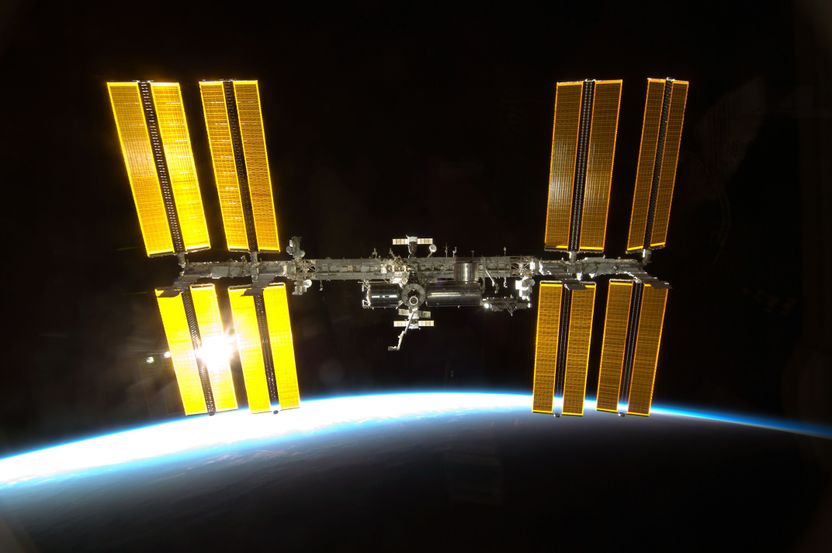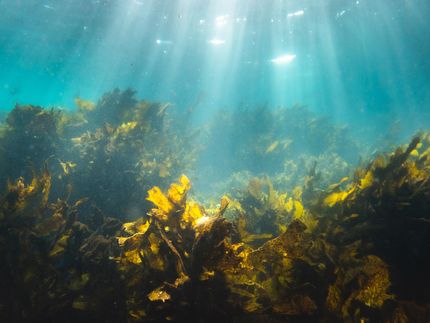Yeast in space
Researchers look for vitamin source for astronauts
Drained sausage pies as well as salmon salad and chocolate pudding: On their historic journey to the moon in July 1969, the three US astronauts also carry a greeting from earthly nutritionists in their luggage. Approximately 50 years later, space travel is aiming for more distant targets than the Earth's satellites - such as Mars. However, the further the cosmic excursions lead, the more important the food becomes. "Everyone wants to go to the moon and Mars, but the question of resources has not been clarified - especially for a stay in space that lasts longer than three months," says expert Jens Hauslage.

In mid-June, the scientist from the German Aerospace Center (Deutsches Zentrum für Luft- und Raumfahrt; DLR) will be in charge of launching a rocket in Sweden that also has 20 grams of yeast on board: a small amount for research, but perhaps a big step for space travel. Hauslage and its partners in the Palatinate are interested in whether yeast can form B12 in weightlessness - the vitamin is important for humans. Usually people take it in with meat, but the universe demands alternatives. "Once we've settled the B12 question," Hauslage says, "we'll have one less problem."
His project partners in Rhineland-Palatinate are Weincampus Neustadt and BierProjekt Landau eG. "We Southern Palatinate wanted to know whether yeast survives under such conditions," says Dominik Rödel from Landau. That's why they asked the Space Agency. "DLR is experimenting with yeast to supply people with vitamin B12 in closed systems and has taken us on board." By embedding in existing experiments, only organisational effort is required, costs are almost non-existent, says Rödel. The yeast is the smallest of ten experiments in the rocket, Hauslage says.
And here's how it's gonna be: On 11 June, a twelve-metre high rocket is expected to take off from the launch site near Kiruna. The almost three-tonne missile climbs to an altitude of 248 kilometres and returns to Earth after six minutes in weightlessness - on a parachute. "We want to take a molecular biological look at what yeast cells produce in this stress situation," said Hauslage.
"After salvage, the yeast is sent chilled by express to the Neustadt wine campus. I'm sure the examination there will take several weeks." Nutrition has always been a central topic in space travel. The US astronaut John Young took a corned beef sandwich on board in 1965 and annoyed the technicians in the control centre with the bread crumbs floating around. A lot has happened since then - cold paste in aluminium tubes and cube-shaped bites are a thing of the past.
The menu of the International Space Station ISS at an altitude of around 400 kilometres now offers dozens of possibilities. Experiments with yeast have also been carried out, for example in 1997 in cooperation with the Strahlenzentrum Gießen (Hessen) on board the former space station "Mir". The difference to previous yeast experiments is that this time the researchers had so-called control groups on Earth, says Rödel. For some time now, lettuce and tomatoes, for example, have been grown on the ISS as experiments in order to at least partially ensure the supply of fresh food to space travelers.
Note: This article has been translated using a computer system without human intervention. LUMITOS offers these automatic translations to present a wider range of current news. Since this article has been translated with automatic translation, it is possible that it contains errors in vocabulary, syntax or grammar. The original article in German can be found here.
Most read news
Organizations
Other news from the department science

Get the food & beverage industry in your inbox
By submitting this form you agree that LUMITOS AG will send you the newsletter(s) selected above by email. Your data will not be passed on to third parties. Your data will be stored and processed in accordance with our data protection regulations. LUMITOS may contact you by email for the purpose of advertising or market and opinion surveys. You can revoke your consent at any time without giving reasons to LUMITOS AG, Ernst-Augustin-Str. 2, 12489 Berlin, Germany or by e-mail at revoke@lumitos.com with effect for the future. In addition, each email contains a link to unsubscribe from the corresponding newsletter.



























































